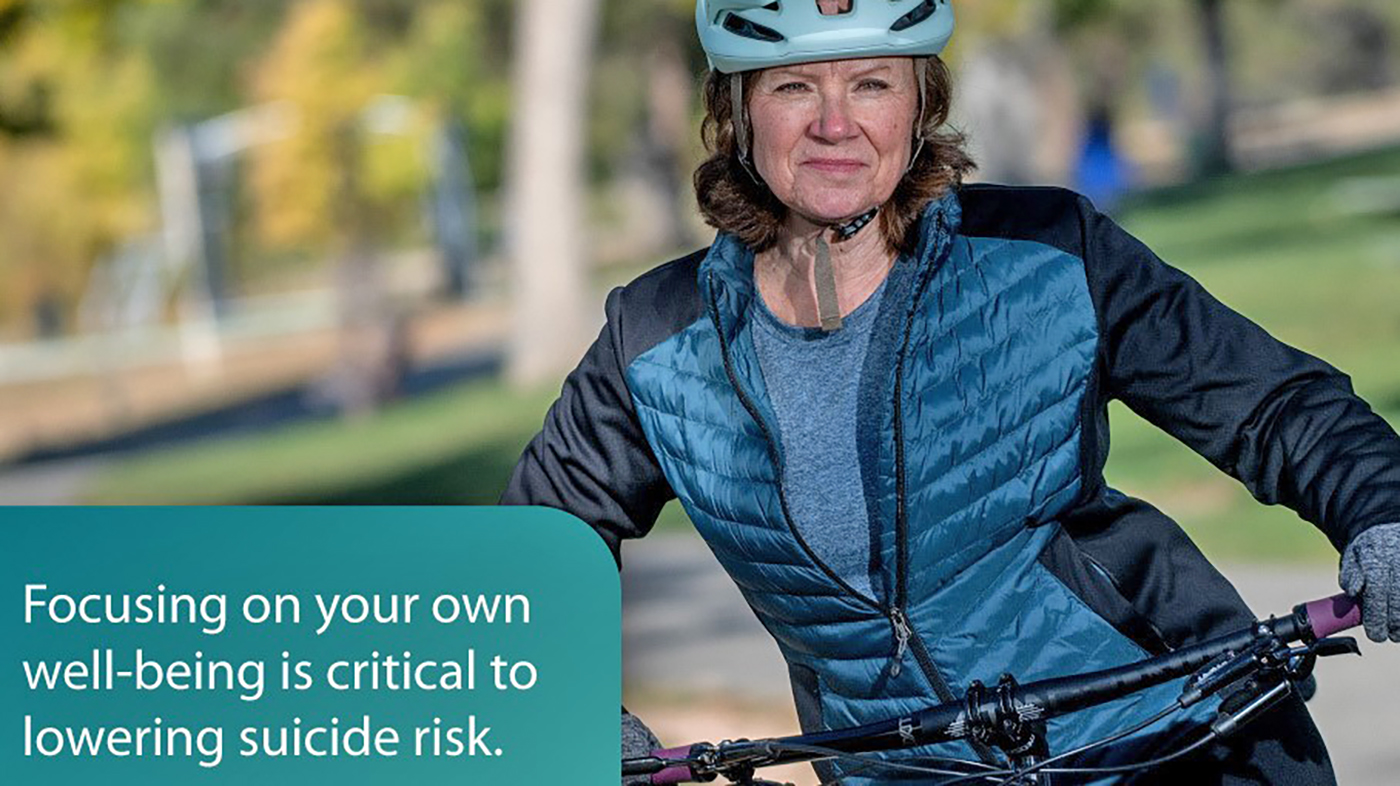For some, self-care can mean being “self-indulgent,” like spending precious time doing frivolous things for yourself. For others, it means engaging in activities that bring joy, the kind that boost both mental and physical well-being.
I see self-care as closely tied to well-being. If you enjoy kayaking, the time spent on the water enhances your well-being. Similarly, if you look forward to Sunday brunch with a friend, sharing a meal with someone you care about boosts your sense of well-being.
However, for Veterans, it can be challenging to put ourselves first. Veterans were trained to serve others and prioritize the mission over our own needs. But prioritizing your well-being is far from frivolous. In fact, focusing on your overall self helps strengthen protective factors and reduce risk factors for suicide—which I’ll explain further below.
Self-care helps build a network of support
Protective factors are characteristics associated with a decreased likelihood of suicide behaviors and can help offset risk factors like stressful life events and certain mental health conditions. Protective factors include:
- Access to mental health and substance use disorder care.
- Feeling connected to other people.
- Positive coping skills.
- Resilience.
So, what does this mean for you? It means keeping appointments with your health care providers, finding ways to connect with others, joining a community group, finding a faith-based organization that aligns with your beliefs, exploring volunteer opportunities in your area, or taking a class at a local rec center or gym.
Increasing protective factors builds networks of support that can help prevent suicide by promoting physical, mental, emotional and spiritual wellness.
VA resources promote well-being
Regardless of when, where or how you served, all Veterans have earned access to support and resources. VA offers a range of programs and initiatives that can help build protective factors to reduce the risk of a suicide crisis.
Don’t wait. Reach out.: You don’t have to solve life’s challenges alone. This website helps Veterans proactively seek support and resources, no matter what you’re facing. Resources are broken down by category, including:
- Experiencing Grief or Loss.
- Feelings of Depression.
- Feelings of Isolation.
- Health Challenges.
- Living with a Disability.
VA’s Safety Plan app: This app helps you create a custom step-by-step action plan to keep yourself safe when experiencing thoughts about suicide or self-harm. You can identify personal coping strategies and sources of support—giving thoughts of suicide time to decrease and become more manageable.
There are six steps to creating your safety plan. It’s important to create your safety plan when you’re not in distress, so you can think clearly and have time to complete the steps.
- Step 1: Warning signs (that I may be headed toward a crisis).
- Step 2: Ways I can cope (on my own).
- Step 3: My distractions (places I can go and people I can call).
- Step 4: Friends and family I can call (for support).
- Step 5: Professionals I can call (in times of crisis).
- Step 6: Keeping myself safe (by limiting my access to dangerous objects).
Many VA resources are available to all Veterans, regardless of enrollment in VA benefits or health care.
No one knows if or when a crisis will happen. But you’re less likely to face a crisis if you foster and develop strategies that can enhance your emotional and physical health.
Topics in this story
More Stories
From one battle to the next, including four types of cancers, Eliot Winokur’s resilience remains unshaken.
As severe weather threatened Mississippi, local news warned of a dangerous outbreak of tornadoes. A VA nurse stepped up.
Dorothy “Pat” Rudd, 103, World War II Navy Veteran, has lived a life of service, pioneering the way for women in the military.





